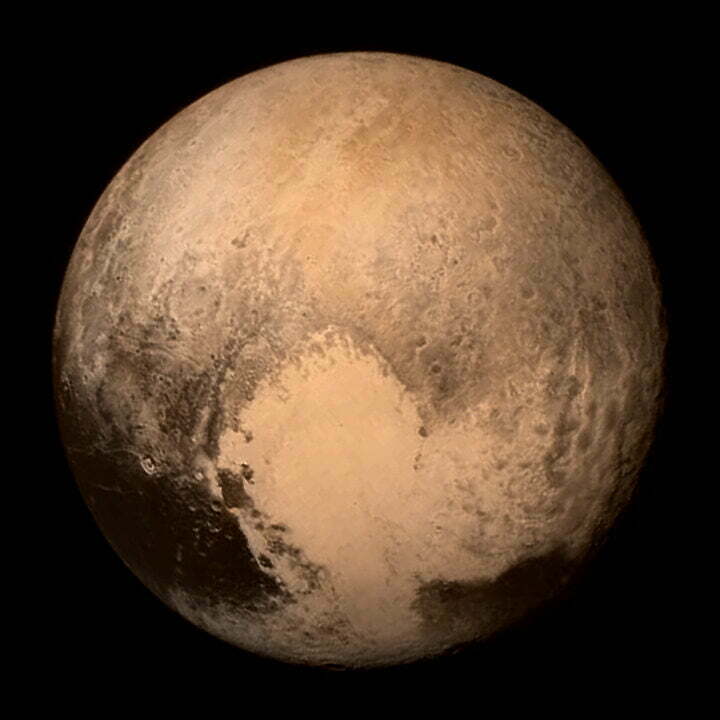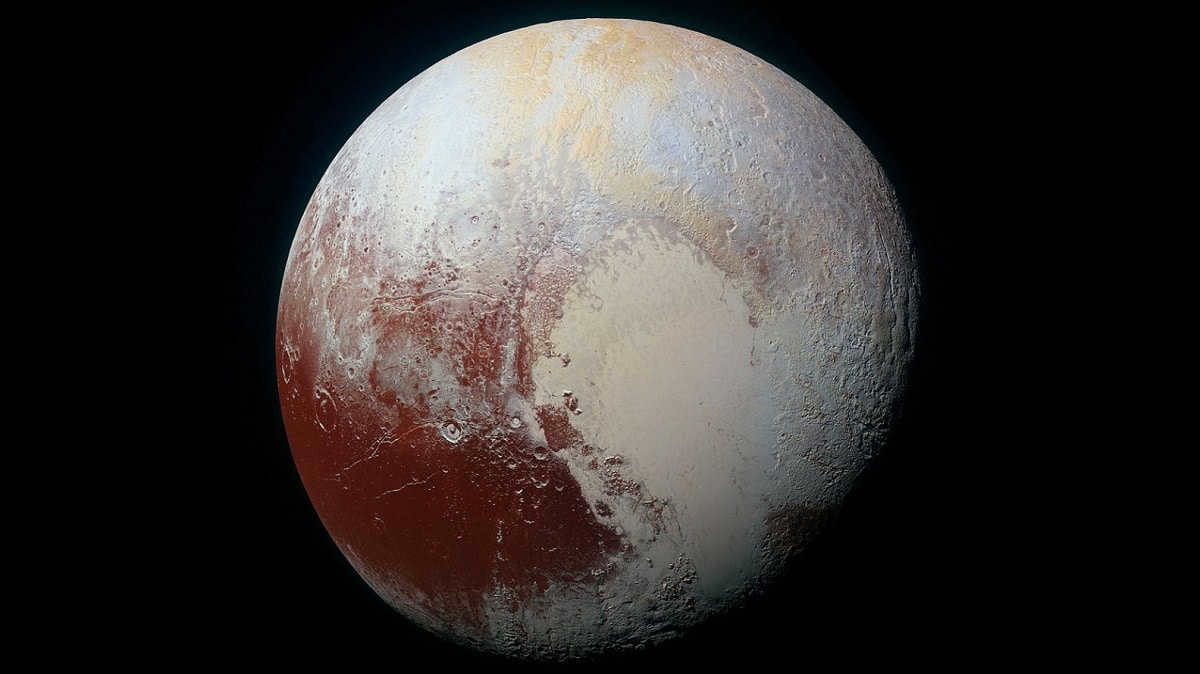
Pluto, situated in the solar system’s Kuiper belt, is a dwarf planet. In 1930, American astronomer Clyde Tombaugh discovered it, and it was initially classified as the ninth planet in the solar system. However, in 2006, the International Astronomical Union reclassified it as a dwarf planet. Many individuals have the query regarding the color of Pluto as it is depicted with a specific hue in textbooks.
That is why we have decided to dedicate this article to elucidate the color of Pluto, its distinguishing features, and how to determine its color.
Main features
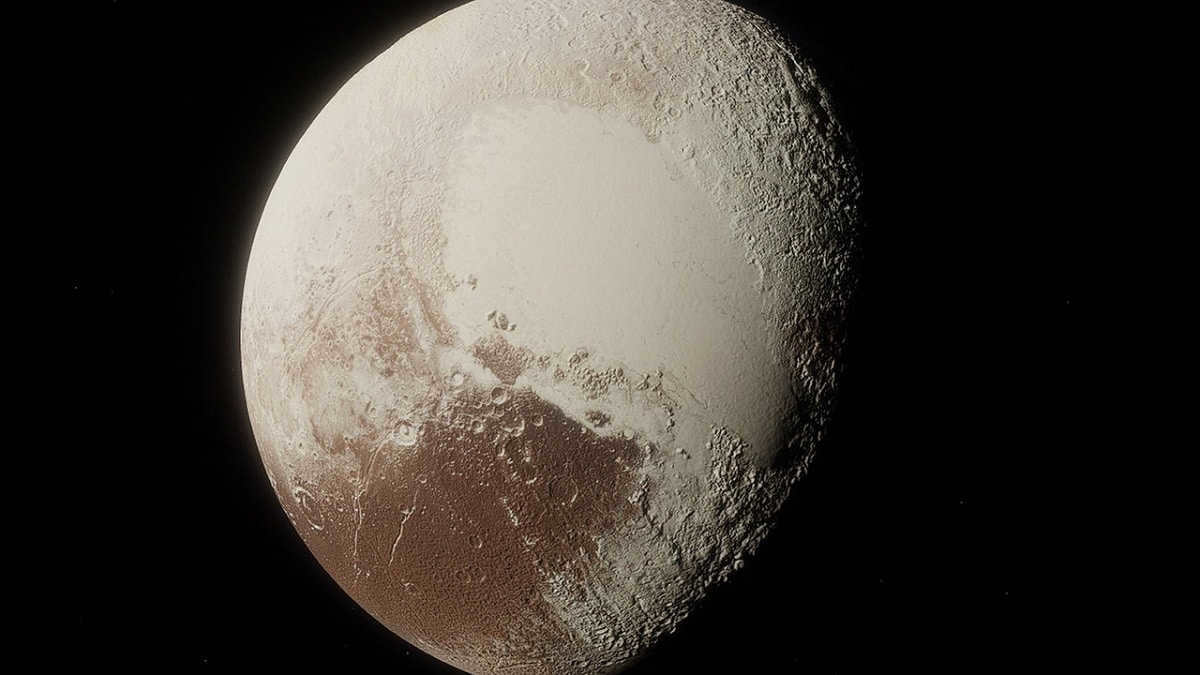
Pluto, the largest known dwarf planet in our solar system, has a diameter of approximately 2,377 kilometers. Its mass is about 0.2% of Earth’s mass.
One of Pluto’s notable characteristics is its icy surface, primarily composed of frozen nitrogen, methane, and carbon monoxide. It also possesses a thin atmosphere consisting of nitrogen, methane, and carbon monoxide, which is believed to freeze and descend to the ground as snow.
Pluto has five acknowledged satellites, with Charon being the largest among them. Charon is approximately half the size of Pluto. The other four satellites, namely Nycta, Hydra, Cerberus, and Styx, were discovered in 2005, 2012, and 2013, respectively, and are considerably smaller.
Due to its position in the Kuiper belt, Pluto possesses an orbit that deviates from the norm, tracing an elliptical course around the Sun. It also boasts an exceptionally prolonged rotation period, spanning approximately 6.4 days to complete a full revolution.
Despite no longer holding the status of an “official” planet within the solar system, Pluto retains its allure as an enigmatic and captivating entity that has engrossed scientists and astronomers throughout the years. With the introduction of cutting-edge technologies and space expeditions, we anticipate unveiling further revelations about this enigmatic celestial body in the forthcoming years.
What is the color of Pluto?
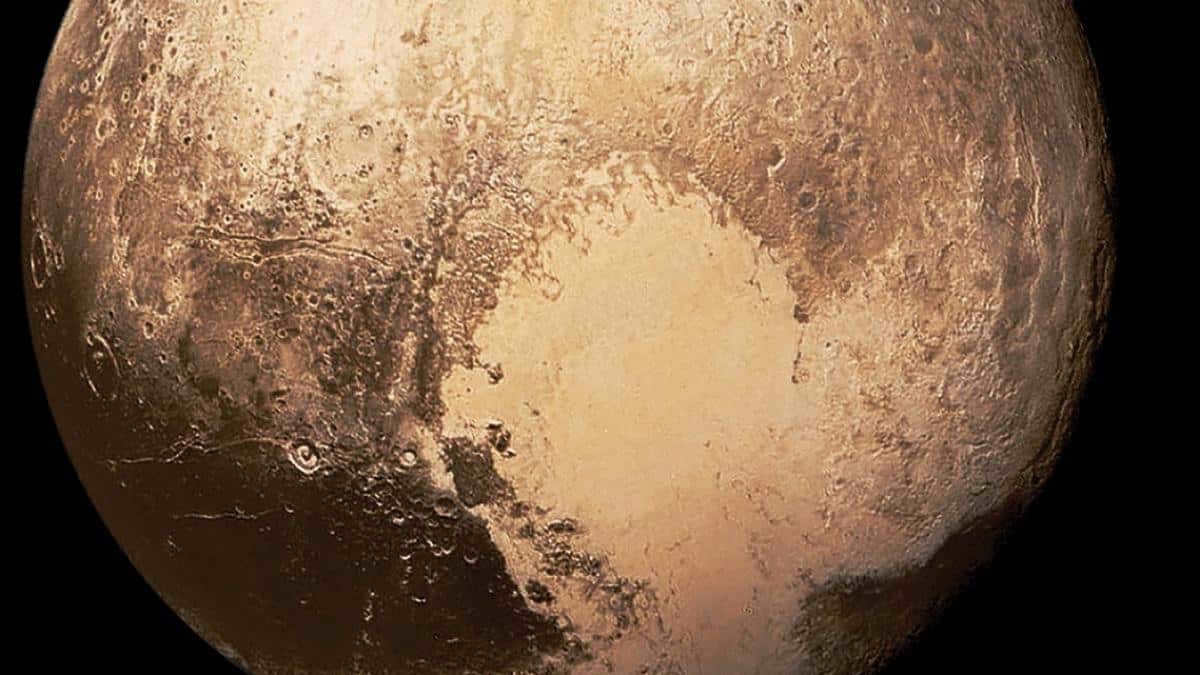
The color of Pluto is one of the most fascinating aspects of its surface. When it was first discovered in 1930, it was believed to be a dull, dark gray planet. However, when NASA’s New Horizons probe arrived in 2015 and captured high-resolution images, it unveiled a surprisingly vibrant and diverse surface.
Pluto’s surface showcases a wide range of colors, including shades of red, brown, yellow, and gray. The region known as Pluto’s “heart” is especially intriguing due to its reddish hue. Scientists believe that this color is a result of the presence of organic compounds called tholins, which are formed when Pluto’s surface is exposed to cosmic rays and ultraviolet light from the Sun.
Aside from the crimson marks, Pluto’s exterior also hosts vivid amber spots, which are believed to be composed of solidified methane. Additionally, there are also areas of the surface that are darker in color, appearing either dark brown or gray, and these regions may consist of intricate hydrocarbons or rocky substances.
All in all, Pluto’s exterior is exceptionally varied, showcasing numerous captivating geological characteristics such as craters, mountains, plains, and canyons. The coloration of Pluto’s surface is merely one of the countless intriguing aspects of this enigmatic world, and there is still much more to be discovered in the forthcoming years.
What led to its demotion from being a planet?
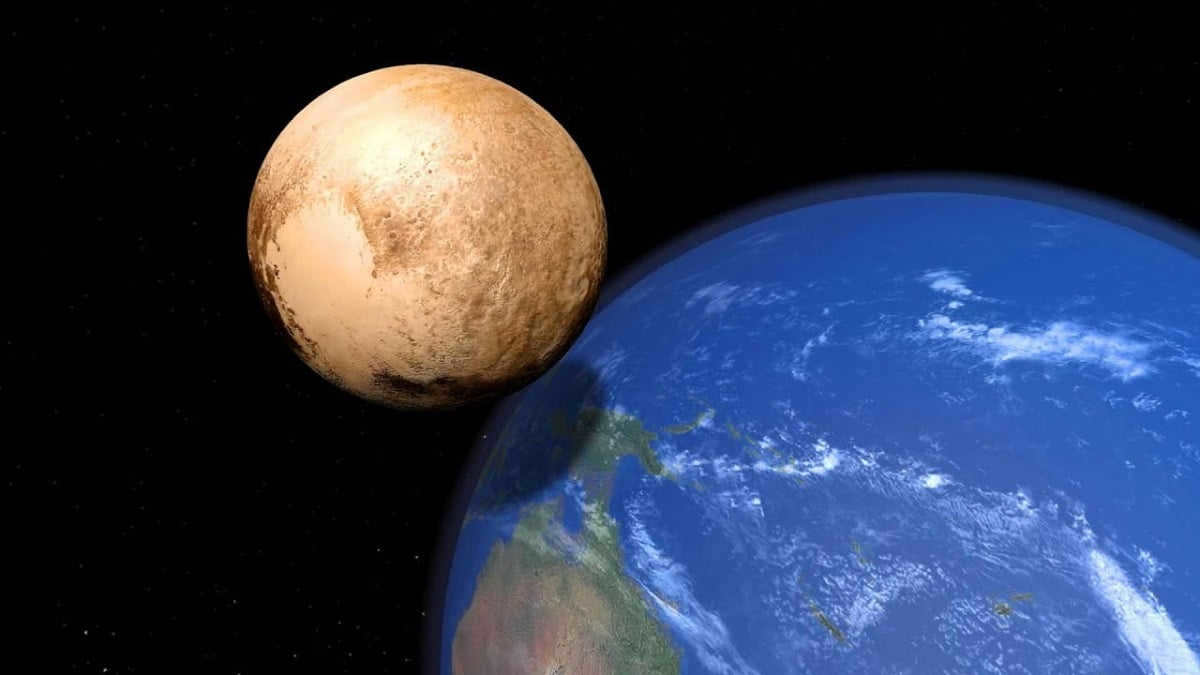
The International Astronomical Union (IAU) made a decision in 2006 that resulted in Pluto no longer being considered a planet in our solar system. During a meeting in Prague, the IAU established a new definition of planets, which specifically excluded Pluto from this classification.
According to the revised definition, a celestial body can only be classified as a planet if it meets three specific criteria. Firstly, it must orbit around the sun. Secondly, it must have enough mass to be able to form a spherical shape due to the force of gravity. Lastly, it must have cleared its orbit of any other objects. It was this last criterion that led to Pluto being excluded from the category of planets.
Pluto is situated within the Kuiper belt, a region in the solar system inhabited by numerous objects resembling asteroids and comets. These objects disrupt Pluto’s orbit, leading to its failure in clearing its orbit of other objects, as per the most recent definition set by the International Astronomical Union (IAU).
Consequently, Pluto has been designated as a dwarf planet, which refers to an object that meets the first two criteria for planet classification, but not the third criterion. Alongside Pluto, other celestial bodies such as Ceres, Erid, and Makemake are also classified as dwarf planets based on this definition.
While some may perceive the exclusion of Pluto from planet status as unjust or arbitrary, the new IAU definition was established to establish a more precise and scientific categorization of celestial bodies within our solar system.
How can I determine the color of Pluto?
The color of Pluto is established by analyzing the light that is reflected from its surface. Scientists use spectrometers to separate the reflected light into its different color components, which allows them to identify the chemical composition and physical characteristics of the surface.
For many years, astronomers faced challenges in accurately determining the color of Pluto because they could only observe it using telescopes on the ground. However, in 2015, NASA’s New Horizons spacecraft reached Pluto and captured the first detailed and high-resolution images of the dwarf planet’s surface.
Scientists have been able to analyze the light reflected off Pluto’s surface and determine its chemical composition and physical characteristics in great detail, thanks to the cameras and spectrometers aboard the New Horizons spacecraft. This groundbreaking research has revealed a surface that is surprisingly colorful and diverse, with shades of red, brown, yellow, and gray.
In addition to studying the colors of Pluto, the New Horizons probe has also collected data on the planet’s surface temperature, the presence of water ice and methane, and other important information that has helped scientists gain a better understanding of Pluto’s composition and how it has evolved over time.
By studying this data, we can learn more about the unique colors and characteristics of Pluto. It is fascinating to see how this distant dwarf planet is so different from what we might have imagined.
This article adheres to our editorial guidelines and ethics. If you find any errors, please let us know by clicking here.
Pluto held the distinction of being the ninth planet in our solar system for more than seventy years, until the International Astronomical Union (IAU) made the decision to “downgrade” it in 2006, reclassifying it as a dwarf planet. However, this reclassification does not diminish the intrigue surrounding Pluto. We have compiled twelve captivating pieces of information about this remote and unique celestial body.
Planet X was discovered during the search for Pluto
Planet X was found on February 18, 1930, by astronomer Clyde Tombaugh using the Lowell Observatory telescope. Tombaugh was looking for Pluto, a hypothetical celestial body affecting the orbit of Uranus. To aid in his search, Tombaugh utilized a blink comparator, an instrument that compares two photographs of the same area of the sky to identify displaced objects indicative of previously unknown planets. Clyde Tombaugh found Planet X in the images he captured on January 28 and 29, 1930.
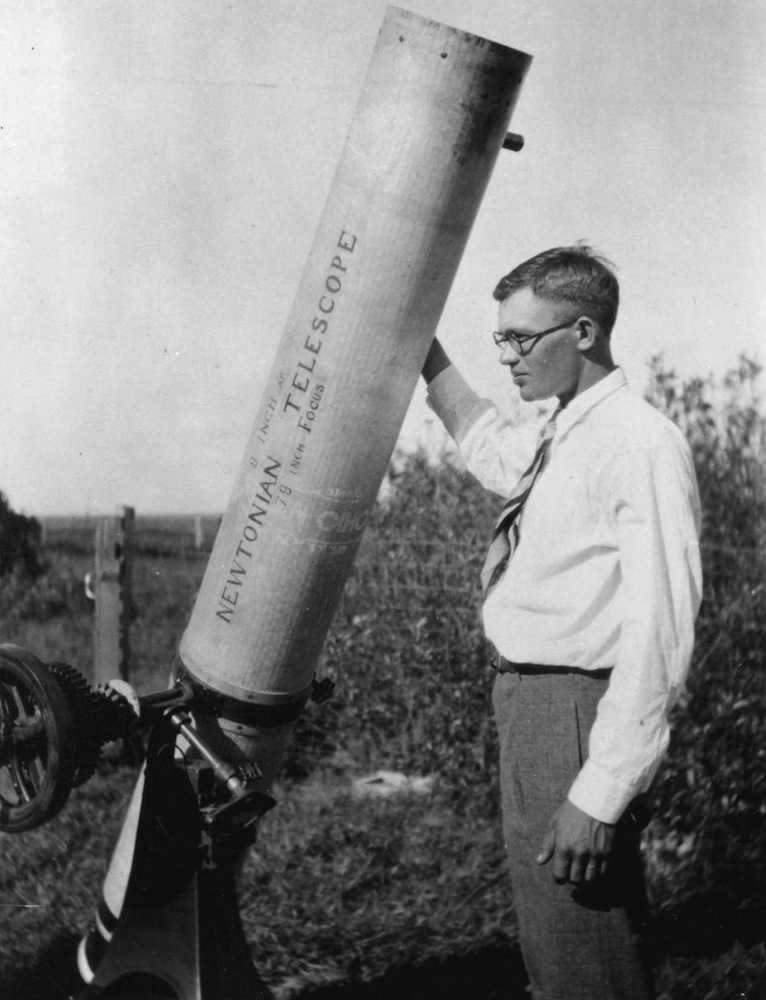
Pluto’s discovery could have happened years earlier
In the field of astronomy, it is not uncommon for someone other than the initial discoverer to first observe a celestial object. Such was the case with Pluto, as it was actually captured in an image taken by Edward Barnard in 1909. However, Barnard’s primary focus was on Halley’s Comet, so he had little chance of realizing that the small dot on the photographic plate was not just another star, but something much more extraordinary.
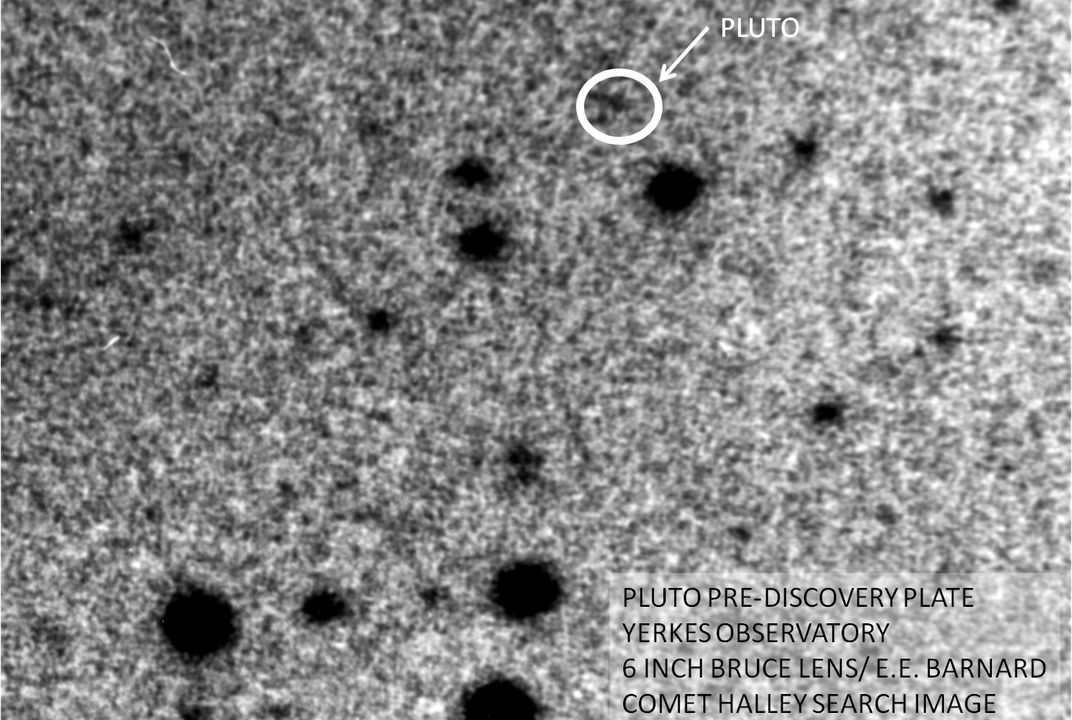
The chance of finding Pluto by searching for Planet X was much more realistic for the astronomers at the Lowell Observatory. They took two photographs of the region of the sky where the dwarf planet was positioned in 1915. Sadly, one of the images had Pluto overlapping with a star, while the other had it falling on a flaw in the plate. Consequently, the discovery was delayed by 15 years.
Following the identification of the newfound celestial entity, numerous scientists put forth a range of alternatives for its moniker. Several suggestions included Zeus, Minerva, Kronos, and Percival – paying homage to Percival Lowell, the esteemed initiator of the Lowell Observatory and the primary backer of the quest for Planet X.

Ultimately, the chosen name came from an 11-year-old girl named Venetia Bernie. When her grandfather asked her what she would name the newly discovered planet, she cleverly suggested “Pluto” due to its distant and cold nature, in homage to the Roman god of the underworld. Her grandfather was so fond of this suggestion that he shared it with an astronomy professor, who then relayed it to the staff at the Lowell Observatory. In a subsequent vote, the name “Pluto” was unanimously chosen. This name not only followed the tradition of naming planets after gods, but it also paid tribute to Percival Lowell, as the first two letters of “Pluto” matched his initials, P.L.
The detection of Pluto was a result of a miscalculation
Due to the inability of astronomers to observe the disk of Pluto even with the most advanced telescopes, it was widely assumed for many years that it shared a similar mass with Earth but possessed an extremely dark surface that had minimal light reflection. However, everything changed in 1978 when American astrophysicist James Christie made a groundbreaking revelation – Pluto had at least one moon, known as Charon.
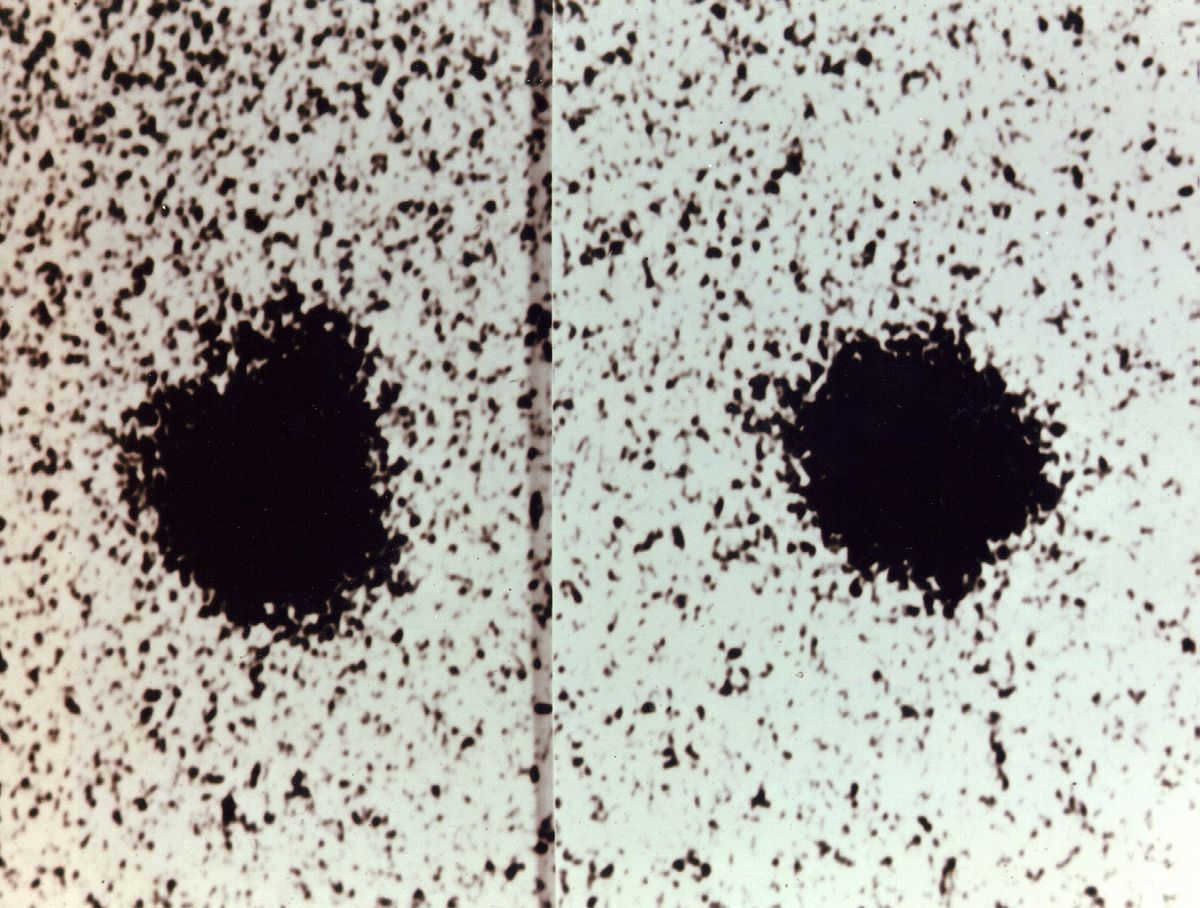
After the detection of Charon, scientists were finally able to establish the mass of Pluto, which turned out to be 500 times smaller than that of Earth. As a result, it became clear that Pluto could not have any influence on Uranus. The resolution of this issue came in the following decade, when the Voyager 2 probe determined the mass of Neptune and discovered that it had been initially calculated incorrectly. Once the mistake was rectified, it became evident that Uranus was not being affected by any mysterious celestial bodies. This implies that the conventional notion of Planet X never actually existed, and the discovery of Pluto was a fortunate accident that arose from initially flawed computations.
Pluto has a unique orbit compared to the other planets in our Solar System. It has a significantly higher eccentricity and inclination to the ecliptic plane. When it is at its farthest point from the Sun, called aphelion, it is approximately 7.3 billion kilometers away. On the other hand, at its closest point, known as perihelion, it comes as close as 4.4 billion kilometers to the Sun. To put this into perspective, this distance is actually less than the gap between the Sun and Neptune. This means that for a certain period during its orbit, Pluto is actually closer to the Sun than Neptune. This unique occurrence last happened between 1979 and 1999, and will not happen again until the years 2227 to 2247.
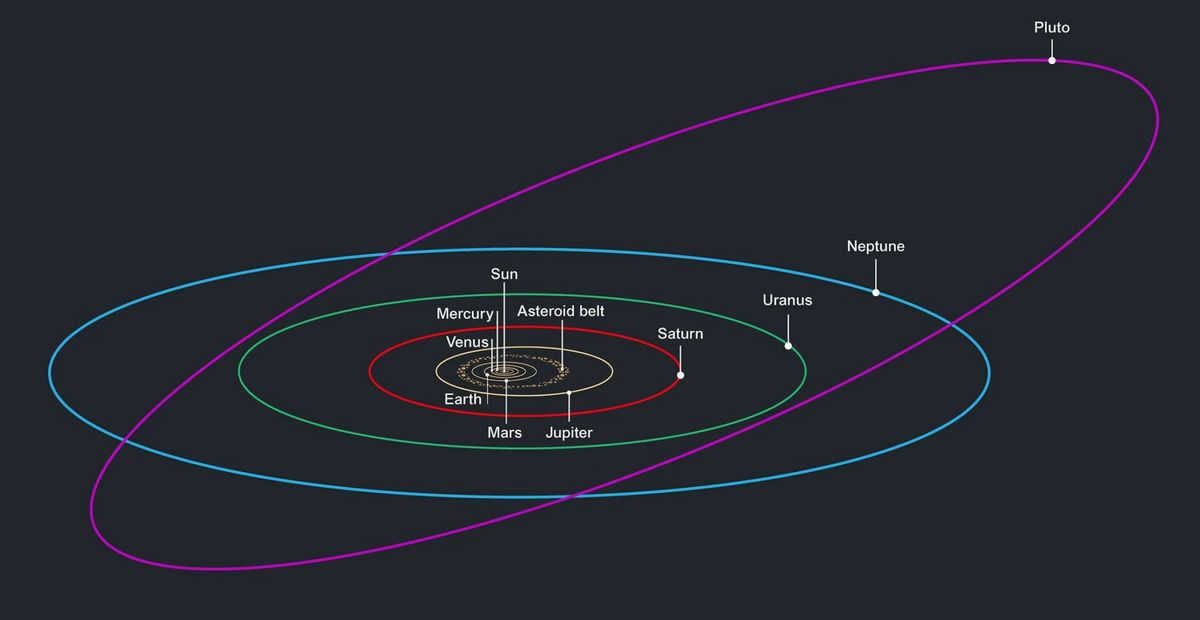
Pluto has been explored by just one spacecraft
In the entire course of history, only one spacecraft has had the opportunity to explore Pluto – the New Horizons probe. Launched in January 2006, it successfully reached its destination in July 2015. Interestingly, when New Horizons set off, Pluto was still considered a planet.
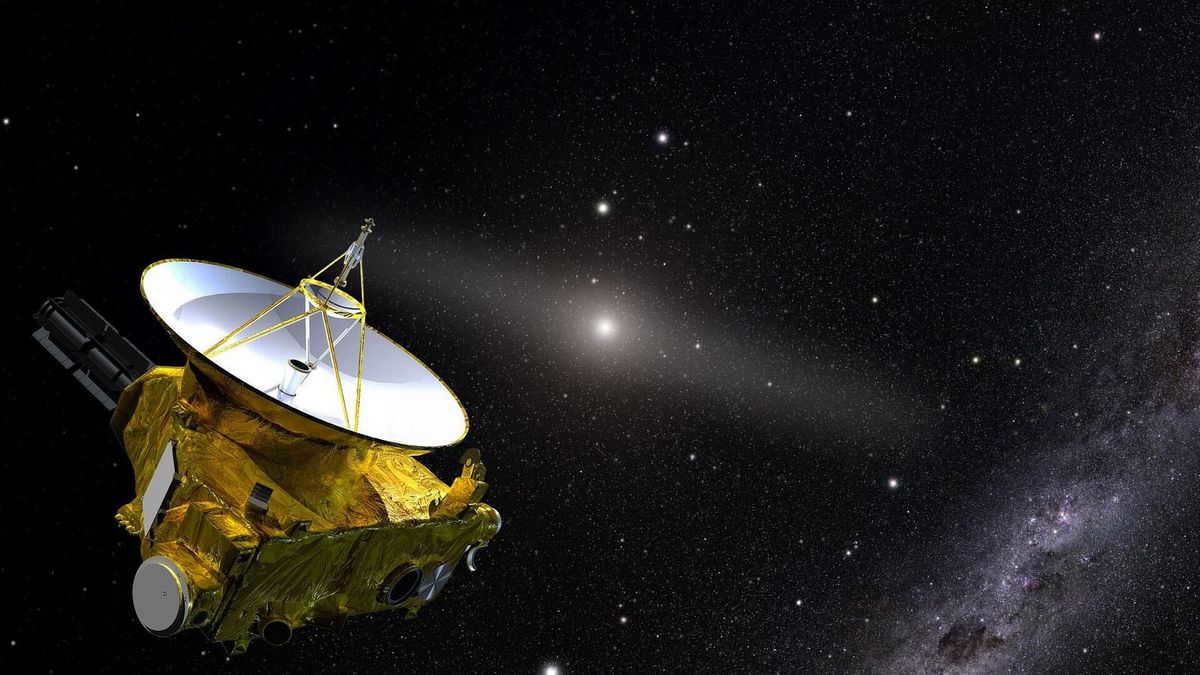

In 2006, Pluto lost its status as a planet
The International Astronomical Union (IAU) made the decision to remove Pluto from the list of planets during its session in August 2006. This decision was influenced by the discovery of several trans-Neptunian objects in the early 2000s that were similar in size and mass to Pluto. Astronomers faced a dilemma – whether to classify all of these bodies as planets or create a new category and reclassify Pluto. Ultimately, they chose the latter option and Pluto became a dwarf planet. It is important to note that some scientists disagreed with this new classification and hope to eventually have the IAU decision reviewed.

Pluto’s size is smaller compared to the Moon
With the assistance of the New Horizons mission, researchers have been able to accurately measure the dimensions of Pluto. The dwarf planet has a diameter of 2,380 kilometers and a surface area of 17.7 million square kilometers. As a result, Pluto is smaller in size when compared to our Moon, which has a diameter of 3,480 kilometers.
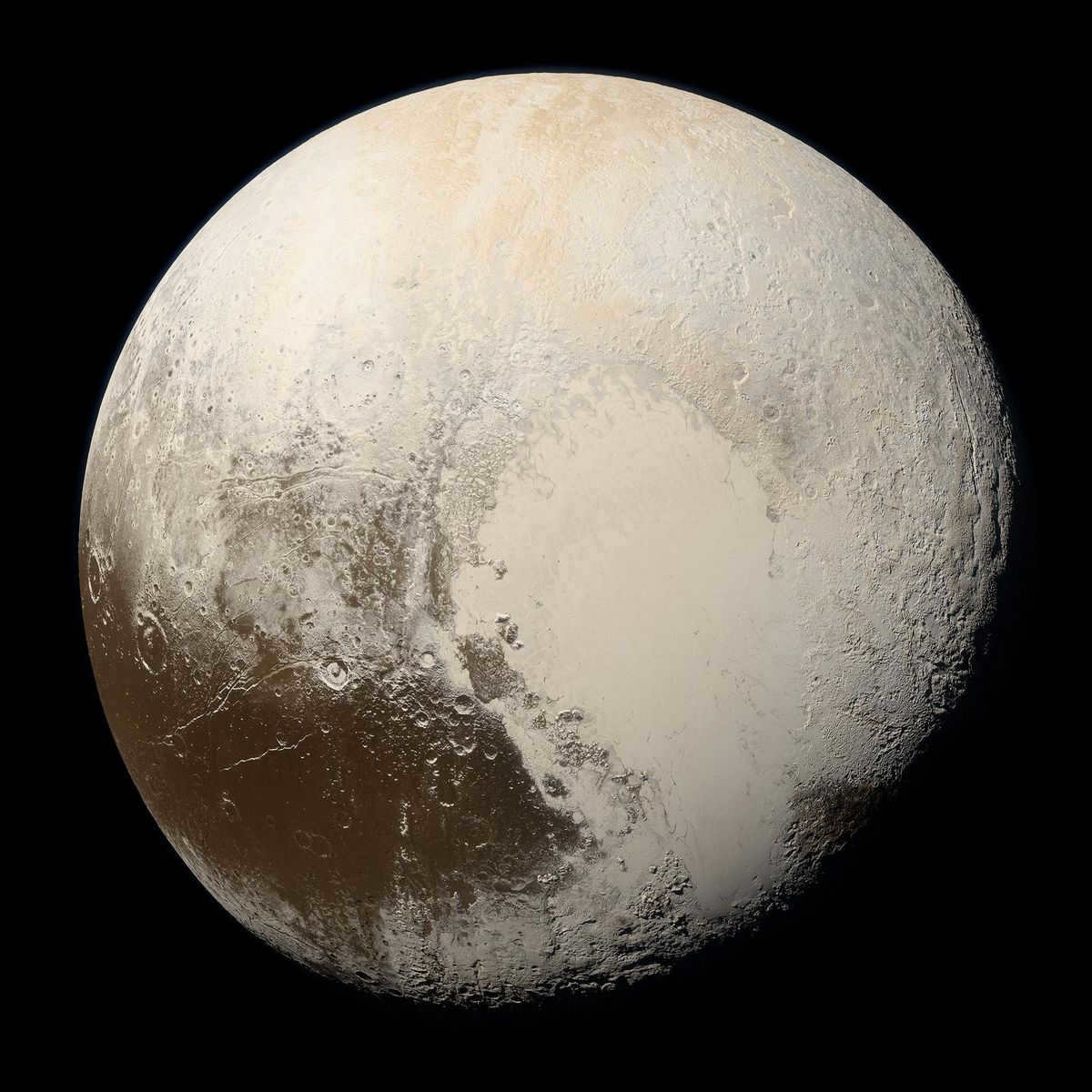
The hue of the sky on Pluto is a shade of blue
In spite of its diminutive dimensions and mass, the dwarf planet possesses its very own atmosphere. It is exceedingly tenuous and composed predominantly of vaporous gases emitted from the icy surface (primarily nitrogen and methane). As a result of solar radiation, more intricate compounds are engendered within it, giving rise to a distinctive azure mist that extends up to an altitude of 200 km.

Due to the variation in sunlight received at different points in its orbit, Pluto experiences significant changes in surface pressure throughout its local year. However, there are still many unanswered questions regarding the specifics of this phenomenon. Some models suggest that Pluto’s gas envelope freezes completely and settles on its surface during the aphelion phase, while other calculations indicate that the dwarf planet retains some of its atmosphere throughout the year.
Pluto possesses a distinctive feature referred to as the “heart”
A remarkable aspect of Pluto is its unique characteristic known as the “heart” – an expansive area with a specific shape measuring approximately 1600 km in diameter, officially named the Tombaugh region. The western section of this region is recognized as the Sputnik Plain. This extraordinary formation is considered one of the most extraordinary phenomena throughout the entirety of the Solar System. The plain is adorned with numerous slabs of luminous nitrogen ice. The prevailing theory suggests that this region originated as a colossal impact crater that subsequently became filled with frozen gases derived from Pluto’s atmosphere.
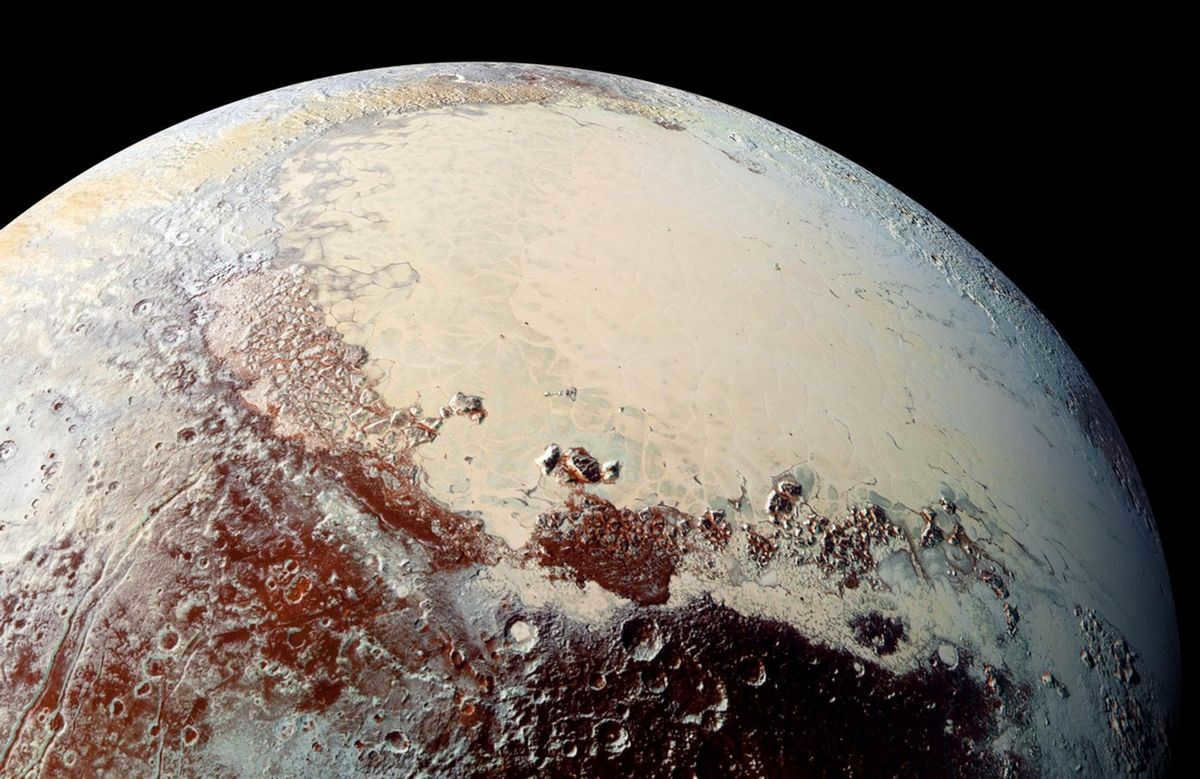
Pluto possesses five moons
Currently, astronomers are aware of five moons orbiting around Pluto. The largest among them is called Charon, boasting a diameter of 1200 kilometers. The remaining four moons are comparably smaller, showcasing irregular shapes and icy compositions. It is speculated that these moons are remnants of a past cosmic collision.
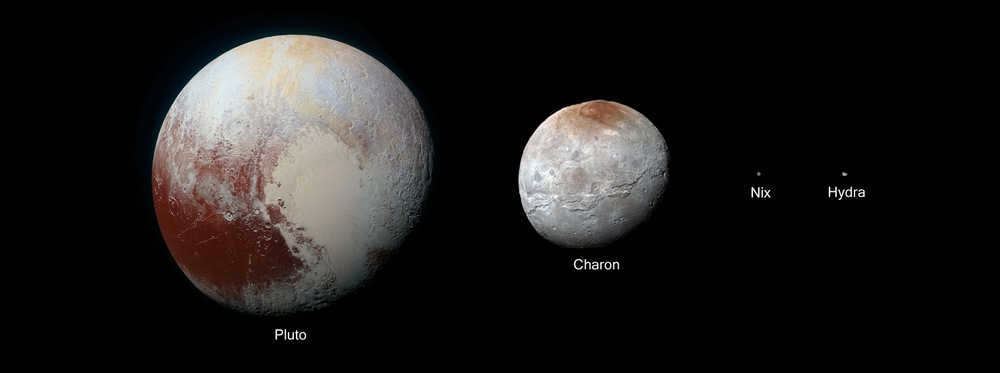
Pluto and Charon could potentially form a binary system
Due to the fact that Charon’s mass is merely eight times less than that of Pluto, their shared center of gravity resides outside the surface of Pluto. As a result, the dwarf planet and its companion revolve around a mutual point in space and remain perpetually facing each other on one side. Furthermore, the gap between them measures a mere 19.5 thousand kilometers – a fraction of the distance between the Earth and the Moon.
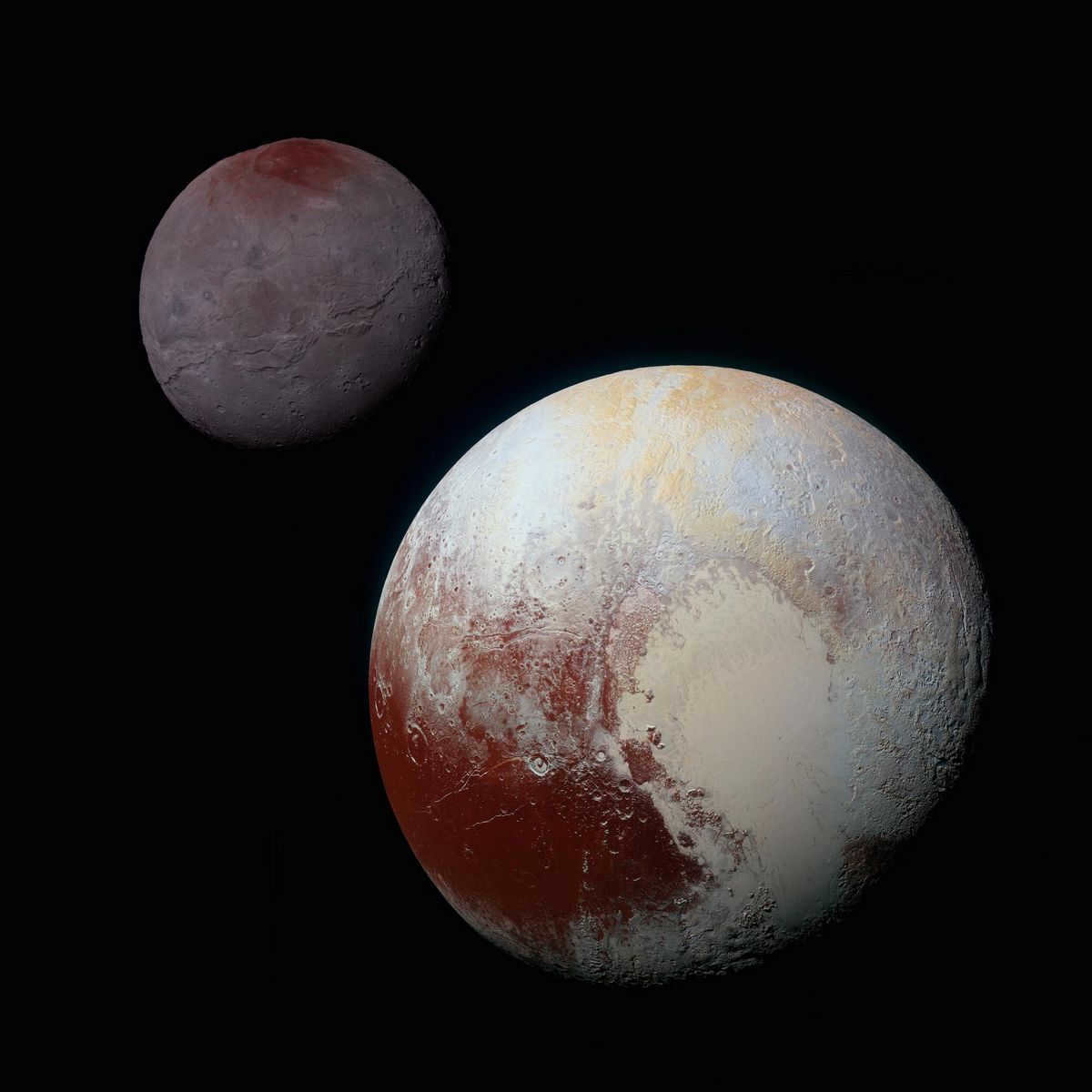
Due to these considerations, a number of astronomers argue that it is more accurate to view Pluto and Charon not as a primary celestial body and its satellite, but rather as a binary (double) system.
Stay up to date with the latest news and fascinating facts by joining our Telegram channel!

As an editor of the news feed and a writer of articles, I have always been fascinated by space and everything related to it since my childhood. Over the years, this interest has evolved into a professional passion. In The Universe. Space. Tech, my role involves writing news articles, fact-checking, and creating various analytical materials.
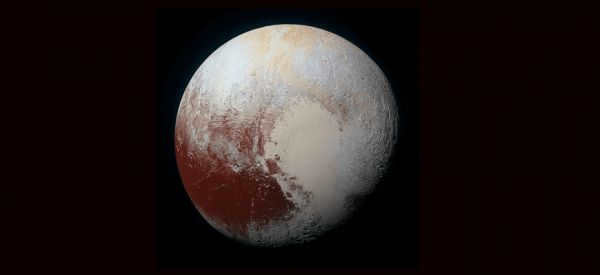
Pluto, the planet located at the outer edges of our solar system, was officially discovered on February 18, 1930, by American astronomer Clyde Tombaugh. In this brief overview, we will provide some key information about Pluto.
The name “Pluto” was given to the dark and cold planet thanks to Venetia Berni, an enthusiastic 11-year-old girl with a passion for astronomy and mythology. She believed that the name of the god of the underworld would be a fitting choice. Her grandfather, Faulconer Meidan, relayed her suggestion to Herbert Turner, a professor and astronomer at Oxford University.
Pluto is well-known for being the only planet in the solar system to have been demoted. Since August 24, 2006, it has held the status of a dwarf planet. However, there is still ongoing debate and not everyone agrees with this classification. In the birthplace of Clyde Tombaugh, Illinois, and in New Mexico where he resided for a long time, the state legislature has chosen to consider Pluto as a planet.
Key Features
Pluto, formerly recognized as the ninth planet in our solar system, is now classified as the largest dwarf planet. With a diameter of 2374 km and an average radius of 1188 km, Pluto stands out among its celestial peers. Its orbital path takes it as close as 4.4 billion km to the Sun and as far as 7.4 billion km. Moving at a velocity of 4.7 km per second, Pluto completes a full revolution around the Sun in a staggering 248 years. Its rotational direction is opposite to that of Venus and Uranus, with a day lasting 152 hours and 52 minutes. The axial tilt of Pluto is 120 degrees, resulting in pronounced seasonal variations.
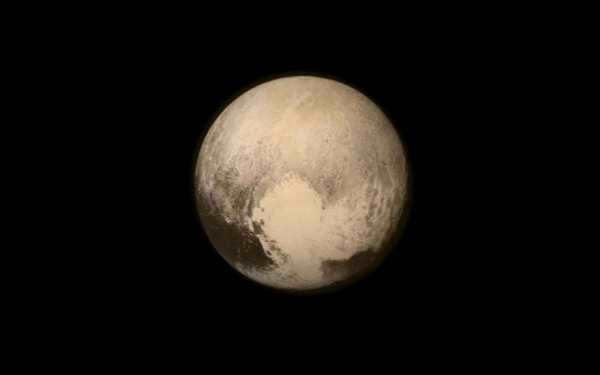
Pluto, the celestial body formerly known as a planet, is a unique and fascinating object in our solar system.
Composition and Atmosphere
According to scientific theories, the core of Pluto is believed to be composed of silicates and ice. The mantle, which surrounds the core, is primarily made up of water ice and extends for a distance of approximately 250-300 kilometers. The surface of Pluto is considered to be relatively young and heterogeneous. On one side, it is composed of methane ice, while on the other side, nitrogen ice is more prevalent. Additionally, the planet contains traces of carbon monoxide.
Thanks to the transmission of images by the “New Horizons” spacecraft, we now have knowledge of mountains that reach heights of up to 3.5 kilometers and are estimated to be around 100 million years old. Adjacent to this mountain range is the Sputnik ice plain, which has a diameter of approximately 1492 km. Additionally, a light zone, resembling a heart, spans up to 2300 km.
In 1988, the presence of an atmosphere consisting of a mixture of nitrogen, methane, and carbon monoxide was finally confirmed.
At a distance of over 200 kilometers from the surface, a light haze is observed, dividing into 20 distinct layers. On the surface, the average temperature drops to minus 223 degrees Celsius.
Currently, there are only five known natural satellites orbiting Pluto.
The largest of these is Charon, which was first discovered by James Christie in 1978.
Charon is situated at a distance of 19596 kilometers from Pluto and has a diameter of 1215 km. It rotates in sync with Pluto, always showing the same face.
Charon stands out from Pluto due to its darker coloration, leading scientists to believe that it is covered in ice, geologically active, and possibly contains significant deposits of graphite.
The other moons were all discovered more recently, with the help of the powerful Hubble telescope. Nicta and Hydra were detected in 2005, Kerber in 2011, and Styx in 2012.
Nicta has dimensions of 54x41x36 km and orbits at a radius of 49000 km.
Hydra measures 43×33 km and orbits at a radius of 65000 km.
Kerber is much smaller, with dimensions of 12×4.5 km, and orbits at a radius of 58000 km.
Finally, Styx is the smallest moon, measuring 7×5 km, and has an orbit radius of 42000 km.
Research
Observing Pluto in telescopes is challenging due to its significant distance.
To study Pluto and its satellites, the New Horizons automatic interplanetary station was launched from Earth on January 19, 2006.
The mission aimed to search for rings and new satellites of Pluto, analyze the atmosphere, structure, and surface of both Pluto and Charon.
In 2015, the spacecraft successfully completed its objectives.
It transmitted images from the surface and research data of Pluto and its satellites back to Earth.
However, along with the answers to their questions, scientists also encountered new mysteries. It appears that the dwarf planet still holds many secrets.
The exploration of Kuiper belt objects is scheduled for 2019.
We will provide more detailed information on the transmitted data in a forthcoming article.
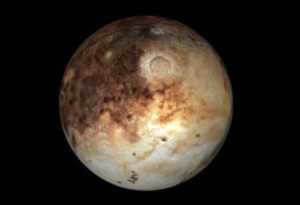

The celestial body known as Pluto is a fascinating subject for young astronomers. This icy planet, which remains largely unexplored, captivates the imagination with its mysterious nature.
Pluto was first theorized by Urbain Leverrier in 1840, but its official discovery is credited to American astronomer Clyde Tombaugh on February 18, 1930.
The name “Pluto” was proposed by an eleven-year-old girl named Venetia Burney, who had a passion for both astronomy and mythology. She believed that this distant and frigid world would be fittingly named after the God of the underworld. Venetia’s grandfather, Faulconer Meidan, happened to work at the library of Oxford University, where he shared his granddaughter’s suggestion with Professor Herbert Turner. The name “Pluto” emerged victorious, and Venetia was awarded five pounds sterling for her contribution.
Until 2006, it was deemed a planet within our solar system, but it has since been reclassified as a dwarf planet, although not all scientists are in agreement with this determination.
Being a dwarf planet, it has a diameter of merely 2374 kilometers, making it smaller than the Moon.
It orbits the Sun in a relatively flattened trajectory, ranging from a proximity of 4.4 billion km to a distance of 7.4 billion km. It completes a full revolution around the Sun in 248 years.
Similar to Venus and Uranus, it rotates on its axis in the opposite direction.
A day on this planet lasts for 152 hours and 52 minutes, and it has an axial tilt of 120 degrees.
Reliable information about the composition of Pluto is scarce, but scientists hypothesize that the planet’s core is made up of silicates and ice, while the mantle is composed of water ice and extends approximately 300 kilometers. The surface of Pluto is primarily covered in ice, with traces of carbon monoxide. The average temperature on the planet drops to a bone-chilling minus 223 degrees Celsius. Just imagine what the weather must be like on this distant planet!
One prominent feature on Pluto’s surface is the Sputnik Planitia, a large ice plain with a diameter of approximately 1492 kilometers. Its distinctive shape resembles that of a heart. Additionally, there are towering mountains that reach heights of 3.5 kilometers and stretch across vast distances. The planet’s atmosphere is comprised of a mixture of nitrogen, methane, and carbon monoxide, making it uninhabitable for humans due to the lack of breathable air and extremely cold temperatures.
Despite being visited by the New Horizons spacecraft and obtaining a wealth of new data, Pluto is still considered relatively unexplored.
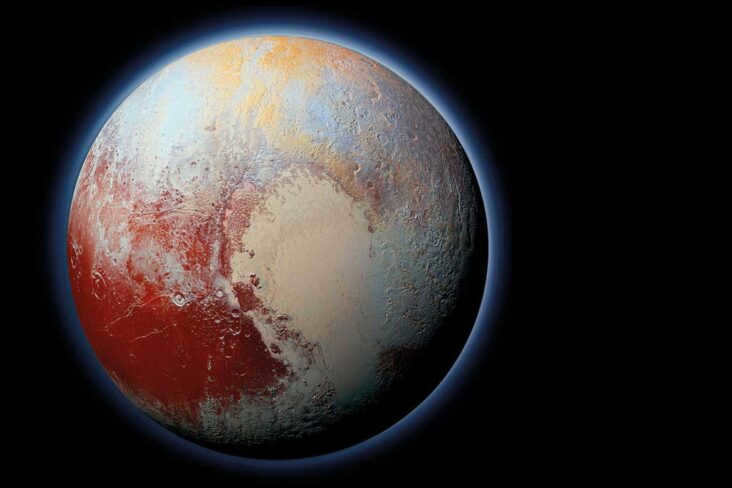
Pluto is the tenth most massive known object directly orbiting the Sun. It holds the distinction of being the first object discovered in the Kuiper belt and is the largest known plutoid. Clyde Tombaugh discovered Pluto in 1930. For 75 years, it was classified as a planet.
So, does Pluto have water? It is believed that there is a massive, liquid ocean beneath Pluto’s surface. The presence of ice is not the only factor that contributed to the reorientation of Sputnik Planitia.
Did Pluto get destroyed? Just to clarify, Pluto has not been destroyed. However, it is no longer considered a planet according to the definitions of astronomy and is now categorized as a “dwarf planet”.
Similarly, what are 3 intriguing pieces of information about Pluto? Engaging tidbits about Pluto
- The classification of Pluto as a “dwarf planet” is a topic of debate: …
- Pluto boasts multiple satellites: …
- Charon could potentially harbor an ocean: …
- The creation of Charon might have resulted in the formation of other moons: …
- Pluto possesses an atmosphere: …
- Pluto might approach the Sun more closely than Neptune:
Are there any photographs of Pluto?
NASA’s New Horizons spacecraft captured the first-ever close-up images of Pluto on July 14, 2015, when it came within a range of 7,800 12,550 miles (600 1,000 kilometers) from the planet. These images provided a unique glimpse into the distant and enigmatic world of Pluto. One of the notable features captured in these images is Pluto’s famous “heart,” which consists of a nitrogen-ice glacier that is 1,200 miles (1,900 kilometers) wide.
What is the length of a day on Pluto? Pluto’s day is remarkably long, measuring 6.4 Earth days.
Is Pluto still active? Despite being located in the frozen outskirts of the solar system, the dwarf planet Pluto exhibits signs of activity. Recent scientific observations have revealed that Pluto is not an inert and lifeless object. Instead, it appears to be a dynamic and ever-changing world, with various processes and movements taking place on its surface.
Why is Pluto not considered a planet for children?
Pluto is no longer classified as a planet because
Pluto is a relatively spherical celestial body and it orbits the Sun, but it also crosses the orbit of Neptune! This doesn’t make it very planet-friendly! Due to its small size, Pluto is unable to clear its path and therefore has a very crowded neighborhood, which violates the definition of a planet.
Why should kids visit Pluto? In the same year that Pluto was demoted from its planetary status, NASA launched the New Horizons mission to Pluto and the Kuiper Belt in order to gain a better understanding of the outer edges of our solar system. … The mission revealed close-up images of Pluto, showing potentially active mountain ranges, floating ice, and an incredible record of geological history on its surface.
Although small in size, Pluto is still of great importance. It is officially classified as a dwarf planet.
Is Pluto actually red and blue? The visual apparent magnitude of Pluto is on average 15.1, which increases to 13.65 at perihelion. In simpler terms, the planet exhibits a variety of colors, including pale patches of off-white and light blue, streaks of yellow and subtle orange, as well as significant areas of dark red.
What is the color of Pluto?
We were aware that Pluto generally has a reddish hue, but our understanding of the specific details was limited. However, when the New Horizons automated probe passed by Pluto in 2015, it captured enough images for us to closely examine the colors of this dwarf planet. As it turns out, Pluto is primarily composed of various shades of reddish brown.
Is that like spending 1 hour and 7 years in outer space?
The initial planet they touch down on is in close proximity to a gargantuan supermassive black hole known as Gargantuan, which exerts an immense gravitational force that generates enormous waves on the planet, resulting in the dispersal of their spacecraft. Additionally, due to its close proximity to the black hole, time experiences a significant slowdown, with a single hour on this distant planet being equivalent to seven years on Earth.
What is the reason behind Pluto’s need for 248 years? Pluto requires 248 Earth years to complete a single revolution around the sun. Consequently, one year on Pluto is equivalent to approximately 248 Earth years. Furthermore, Pluto completes a rotation in approximately 6 and a half Earth days or nights, meaning that one day on Pluto is approximately 6 and a half Earth days or nights in duration. Lastly, it is worth noting that Pluto possesses five known satellites.
Does sunlight reach Pluto? Discover your Pluto time.
Pluto is situated in the outer reaches of our solar system, billions of miles away from our planet. The intensity of sunlight in that location is significantly weaker compared to Earth. However, it is not entirely dark. In fact, there are brief moments each day, before sunrise and sunset, when the illumination on Earth matches the brightness at midday on Pluto.
What is the current location of Pluto in 2021?
As of April 27, Pluto is in a retrograde position at 26 degrees of Capricorn. It will eventually resume its forward motion on October 6, positioned at 24 degrees of the powerful, loyal, and authoritative Capricorn sign.
Do you know who named Pluto? Venice Bernie Fair, an accountant who taught economics and mathematics in England, will forever be remembered for her remarkable achievement at the age of 11 when she proposed the name Pluto. In a NASA interview conducted in January 2006, Fair revealed that she came up with the name during breakfast with her mother and grandfather.
Certainly, you have the opportunity to observe Pluto but it will require a telescope with a large aperture! Pluto is situated on the outermost edge of our solar system and possesses a faint stellar magnitude measuring 14.4. … This dwarf planet is positioned 3,670 million miles away from the Sun and may appear as just another faint star when viewed through your telescope.
As of 2021, where can we find Pluto? On April 27, Pluto retrograded to 26 degrees Capricorn. Finally, on October 6, it will transition to direct motion in the 24th degree of the determined, devoted, and authoritative sign of Capricorn.
Can you see Pluto with the naked eye?
According to Sky and Telescope, in order to catch a glimpse of the dwarf planet, you will need a telescope with a mirror that is at least 8 inches in diameter. Even at its brightest, Pluto is not visible to the naked eye and is about 27 million times fainter than Venus.
How was Pluto destroyed? In the show Ben 10: Alien Force, Incursean Emperor Milleus uses the power of the Incursean Conquest Ray to destroy Pluto.
How long can you survive on Pluto without a spacesuit?
Without proper protective gear, all of your bodily fluids such as mucus, saliva, and sweat will evaporate, causing you to dry out completely. This would be a pretty “horrible” experience. So, if you were on Pluto without a spacesuit, you would only have about two minutes to explore the planet.
Remember to share this post!
Percival Lowell took on the task of continuing the quest for Pluto. In the early 1900s, he organized a major initiative with the goal of discovering a new planet, initially referred to as “Planet X.” After extensive and arduous efforts, scientists at Lowell’s private research center managed to obtain two blurry photographs of the elusive object in the spring of 1915.
In 1840, the search for Pluto was then carried forward by the team at Mount Walson Observatory, led by Milton Humason. They were able to capture faint outlines of “Planet X” on a photographic plate.
In 1929, Westo Melvin Slifer, the newly appointed director of the Lowell Scientific Center, made the decision to recommence the search for Pluto. He entrusted this important task to Clyde Tombaugh, a young astronomer who was only twenty-three years old at the time. One of Clyde’s main responsibilities was to capture photographs of the night sky at two-week intervals. After a year of diligent work, Clyde made a groundbreaking discovery – he found a celestial body that appeared to be in motion. This discovery was later confirmed by additional research photographs. In recognition of his remarkable achievement in March 1930, Tombaugh received the prestigious gold award from the prominent Astronomical Society.
Origin of the name of the planet Pluto
The responsibility of naming the celestial body was entrusted to the staff of the Lowell Center. It was crucial for scientists to assign a name to the newly discovered planet promptly, in order to avoid being overshadowed by others. Countless proposals for names flooded in from all corners of the globe. Constance Lowell, the widow of the observatory’s owner, also joined in the effort to choose a name for the planet. At first, she suggested naming it after the ancient Greek god Zeus, and then after her late husband. Eventually, she deemed her own name to be the perfect fit for the new planet. However, all of these suggestions were swiftly dismissed by scientists.
The suggestion of the name “Pluto” originated from a young student named Venetia Burney during her time at Oxford University. In addition to her interest in astronomy, she had a deep fascination with Greek mythology. Drawing from her knowledge and preferences, she believed that the name of the god ruling the realm of the dead would be a fitting choice for the mysterious and unexplored celestial body.
One morning, Venetia shared her idea with her grandfather, Faulconer Meydan, who happened to know Professor Herbert Turner. Recognizing the suitability of the name, Meydan promptly relayed it to astronomers in the United States. The proposal put forth by this English schoolgirl was swiftly embraced, and as a token of appreciation, Meydan awarded her with five pounds sterling.
The quest for the elusive “Planet X.”
Following the discovery of Pluto, there arose uncertainty among scientists as to whether it was indeed the same celestial body as Lowell’s hypothetical “Planet X.” This uncertainty stemmed from the planet’s faintness and the absence of clear outlines of its disk. Throughout the mid-20th century, the estimated mass of Pluto underwent regular revisions, consistently being reduced. It was not until the identification of its moon, Charon, in 1978 that researchers were able to obtain accurate measurements of the planet’s size. The moon’s discovery was crucial in addressing the previously observed inconsistencies in the orbit of Uranus, as it revealed that Pluto’s mass was only 0.2% that of Earth, which was considered insufficient to explain the observed orbital discrepancies.
Today, the majority of scientists are convinced that the accidental discovery of “Planet X” was made by Lowell.
Timeline of events
- 1906-1916 – Percival Lowell, an American scientist, puts forward the idea of a “Planet X” in our solar system, also known as the ninth planet among scientists.
- March 12, 1930 – Clyde Tombaugh, an employee at the Lowell Observatory, successfully captures an object that closely resembles the ninth planet in all aspects.
- March 25, 1930 – The newly discovered celestial body is named Pluto.
- August 24, 2006 – Pluto gets reclassified as a dwarf planet and is no longer considered a regular planet.
- August 2112 – Pluto reaches its furthest point from the Sun (aphelion) for the first time since its initial discovery.
- 2178 – Pluto completes its first orbit around the Sun since its initial discovery.
The Orbit of the Planet Pluto
Pluto’s orbit stands out among the orbits of all the planets in our solar system due to its unique position. Unlike the other planets, except for Mercury, Pluto has an inclination of 17° in relation to the ecliptic plane. This gives its orbit a distinct shape compared to the rounded orbits of the other planets.
Pluto is located approximately 5.9 billion kilometers away from the Sun. Due to the significant inclination of its orbit, there are times when one part of Pluto is closer to the Sun than Neptune. This phenomenon has been observed in 1979 and 1999. Based on rough calculations, it is estimated that Pluto was in a similar position in 1735 and 1749, a difference of 14 years, before its official discovery. Interestingly, the previous period between similar position changes of Pluto was 20 years, occurring in 1483 and 1503.
Due to the significant inclination of Pluto’s orbit, it is not possible for it to interact with the orbit of Neptune. Moreover, these planets are always situated at a considerable distance from each other, approximately 17 astronomical units.
The trajectory of Pluto is unstable, which prevents scientists from accurately predicting its future path. The position of Pluto’s orbit can only be calculated for a few million years ahead or backward. However, if you observe the movement of this planet for a relatively short period, it may appear to be quite predictable. In reality, the projection of Pluto’s orbit is constantly changing at the end of each period, making it possible to predict its position only for a limited period of time.
Neptune and Pluto’s Orbital Relationship
While Pluto completes three orbits around the Sun, Neptune only completes two, resulting in a constant orbital resonance between the two planets in a 3:2 ratio. If we were to project the orbits of other planets, they would intersect. However, this is not the case for Neptune and Pluto due to their resonance. Although Pluto comes close to Uranus, their orbits cannot touch because of this resonance. In every cycle that ends with Pluto’s perihelion passage, Neptune is always trailing behind. When Pluto reaches perihelion again, Neptune will be at the exact same distance from Pluto as it was after the first cycle, but this time in front. When both planets are on the same side of the Sun, aligning in a straight line with it, Pluto will move into aphelion.
That is why Pluto will never come closer to Neptune than 17 astronomical units (a.u.). And it can only get as close as 11 a.u. to Uranus.
Previously, there was a hypothesis that Pluto used to be a moon of Neptune. However, this theory was completely disproven when scientists demonstrated that the orbits of these planets maintain a stable orbital resonance for millions of years.
Influences on Pluto’s orbit beyond Neptune
Astronomers from all over the globe have tirelessly studied the relationship between Neptune and Pluto, uncovering fascinating insights into the stability of their interaction over millions of years. This remarkable phenomenon can be attributed to two key factors.
To maintain the same level of interaction between the planets, another important factor is the positioning of the orbital angles of Neptune and Pluto. The longitudes of these angles are located above the aforementioned variations. When the points where their orbits intersect align, the smaller planet (Pluto) will be positioned above the larger planet (Neptune). This occurs when Pluto surpasses Neptune’s orbit, reaching the furthest point along its projected path, simultaneously causing a deviation of the first object from the second object’s plane. This phenomenon is known as superresonance or 1:1.
Pluto’s Physical Attributes
Due to the significant distance between Earth and Pluto, obtaining detailed information about this celestial body is challenging. It is not anticipated that new data about this small celestial object will be available until 2015, when the New Horizons spacecraft is scheduled to reach Pluto’s location.
Appearance and Structure
Due to the vast distance between Earth and Pluto, it is often difficult to observe and study the planet. Even with the use of advanced telescopes, the images of Pluto are often blurry and lack detail. This is because Pluto has a very small angular diameter, measuring only 0.11″. When viewed at its closest approach, Pluto appears as a round object with a light brown color. Extensive research has revealed that approximately 98% of Pluto’s surface is composed of nitrogen ice, with traces of carbon monoxide and methane.
Mass and Size of Pluto
Originally considered as “Planet X,” scientists estimated the mass of Pluto by observing its impact on the orbits of Uranus and Neptune. Initially, it was believed that Pluto and Earth had similar masses. However, further research led to a decrease in the estimated mass of Pluto. By 1971, its mass was compared to that of Mars, and in 1978, scientists accurately determined the albedo of Pluto, which is equivalent to that of methane ice. Taking this into account, astrophysicists concluded that Pluto’s mass cannot exceed 1% of Earth’s mass.
The determination of the mass of the Pluto system was facilitated by the discovery of Charon, one of its satellites, in the same year. Scientists utilized Kepler’s third law to make this calculation. Consequently, they determined that the mass of the Pluto-Charon system is equivalent to 0.24% of Earth’s mass. However, due to the current lack of knowledge regarding the precise dimensions of Pluto and Charon, scientists are unable to accurately ascertain the mass of the planet.
Pluto is one of the smallest entities within the solar system, comparable not only to planets but also to certain satellites. Even Earth’s moon is significantly larger than Pluto, with Pluto representing a mere 20% of the moon’s mass.
Atmosphere of Pluto
Pluto possesses a delicate shell of atmosphere that is created through the sublimation of substances like carbon monoxide, methane, and nitrogen from its icy surface. When Pluto moves closer to the Sun, the ice starts transitioning into a gaseous form. Conversely, as the planet moves away from the Sun, these gases gradually solidify and settle on the surface. The lower atmosphere of Pluto maintains an average temperature of approximately -230 °C, while the upper layers experience higher temperatures of about -170 °C.
In 1985, the study of Pluto’s atmosphere commenced. The observation of star coverage prompted scientists to take this step. They were able to easily detect the presence of this planet’s shell. The process of a star being covered happens rapidly if the object being covered lacks an atmosphere entirely. However, if the star’s outline fades gradually, as it did with Pluto, it indicates that the object possesses a shell.
Pluto is home to a total of five natural satellites. The initial one, named Charon, was first identified by scientist James Christie in 1978. In 2005, two additional smaller objects with similar characteristics were discovered. The fourth satellite, Kerber, was spotted by the Hubble telescope in 2011. Finally, in 2012, scientists made the exciting announcement of the fifth and final satellite, which they named “Styx”.
What makes Pluto’s satellites unique is their proximity to the planet compared to other known satellites in the solar system.
The Hubble telescope data has also provided valuable information about the size of Pluto’s satellites. Scientists have determined that none of these satellites have a diameter exceeding 12 kilometers.
Charon
Astronomers made the discovery of this moon in 1978. Charon got its name from the legendary figure who was responsible for guiding the souls of the deceased across the river Styx. It has a volume that is just slightly more than half the volume of Pluto. The diameter of Charon measures about 1205 kilometers.
Based on the findings from the observation of Charon in 1980, scientists were able to calculate its radius with a reasonable level of accuracy. In the same year, data was obtained to estimate the radius of Charon’s orbit. However, recent observations conducted by more advanced equipment have led to a reassessment of this value. Currently, it is believed that the approximate radius of Charon’s orbit is between 19628-19644 km.
Charon and Pluto are often referred to as a binary planet by many astronomers. This classification is due to the barycenter of the system, which is not located on the surface of Pluto.
In 2007, researchers at the Gemini Science Center made an interesting discovery on the surface of Charon – water crystals containing ammonia hydrates. This finding suggests the presence of cryogeysers on this satellite.
Hydra and Nicta
The collaboration between Hydra and Nicta is a remarkable partnership.
Astronomers using the powerful “Hubble” machine obtained pictures of two additional satellites of Pluto in 2005. These objects were officially named Nycta and Hydra in 2006. Nycta and Hydra are smaller satellites located about 2 or 3 times farther away from Charon, another satellite of Pluto. Hydra is positioned 65 thousand kilometers away from Pluto, while Nycta is situated at a distance of 5 thousand kilometers from the planet. Nycta and Hydra have a resonance ratio of 6:1 with each other and a 4:1 resonance ratio with Charon. The orbits of these two satellites have rounded shapes. Ongoing research is being conducted to identify their features and differences from other objects in the solar system. Astronomers have observed that Hydra appears to be brighter than Nycta, suggesting that the surface of the first satellite reflects sunlight more effectively than the surface of the second one.
Kerber and Styx
In 2011, a new celestial body was discovered orbiting Pluto by the Hubble telescope. This newly found object has a diameter of approximately 13-34 km and was officially named Kerber just last year.
Another satellite orbiting Pluto was observed in 2012 and was later named Styx. Scientists were able to determine that Styx has a diameter of 15-25 km and is located approximately 47,000 kilometers away from Pluto.
Kuiper Belt
For a considerable period of time, the source of Pluto remained an enigma for numerous astronomers worldwide. In 1936, a renowned scientist from England named Raymond Littleton proposed an intriguing hypothesis that Pluto was originally a moon of Neptune. Littleton speculated that Pluto was expelled from Neptune’s system due to the gravitational influence of its sizable moon Triton. This assertion sparked intense debate but was ultimately debunked based on the widely acknowledged fact that Pluto never approaches Neptune.

